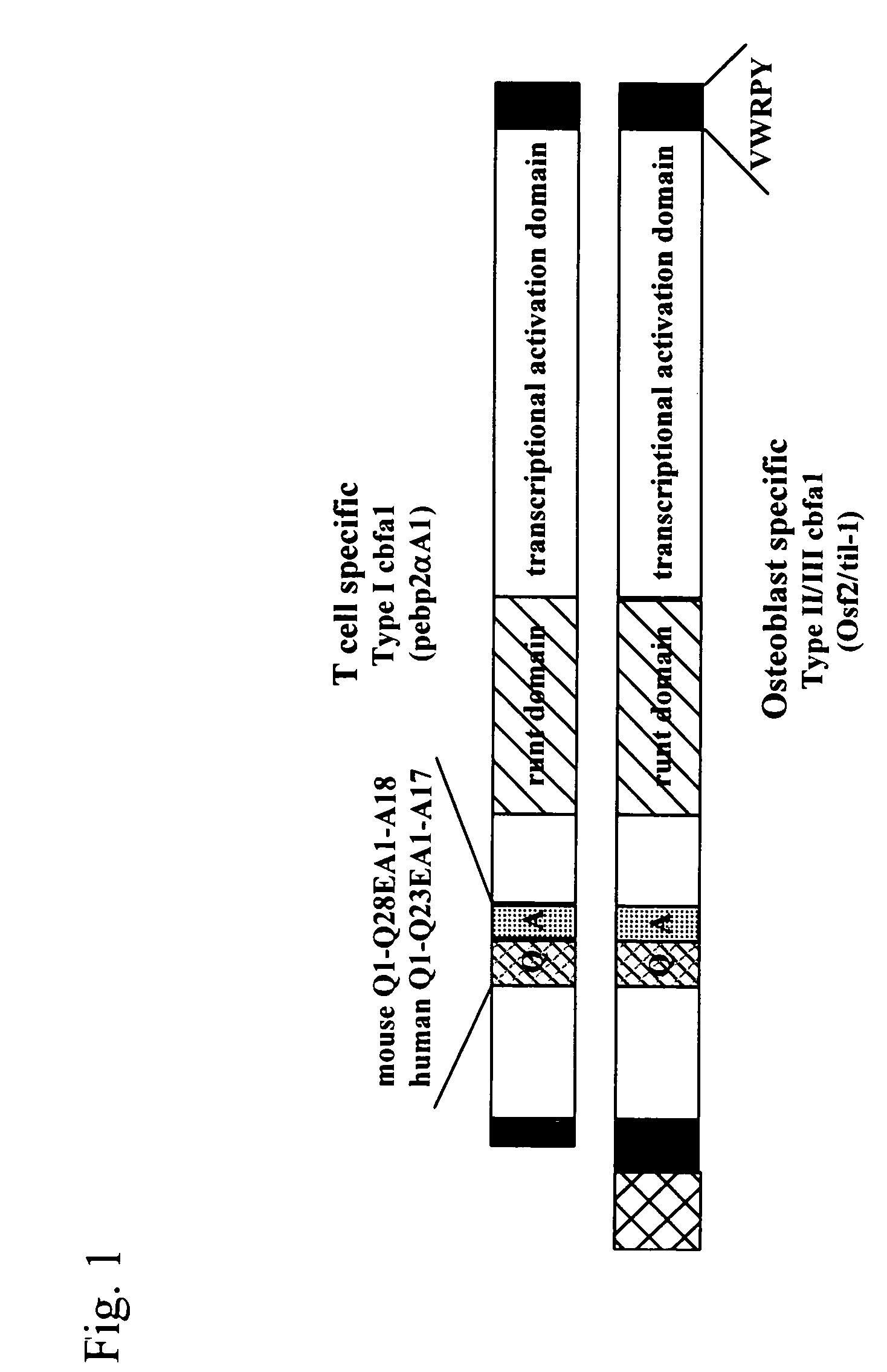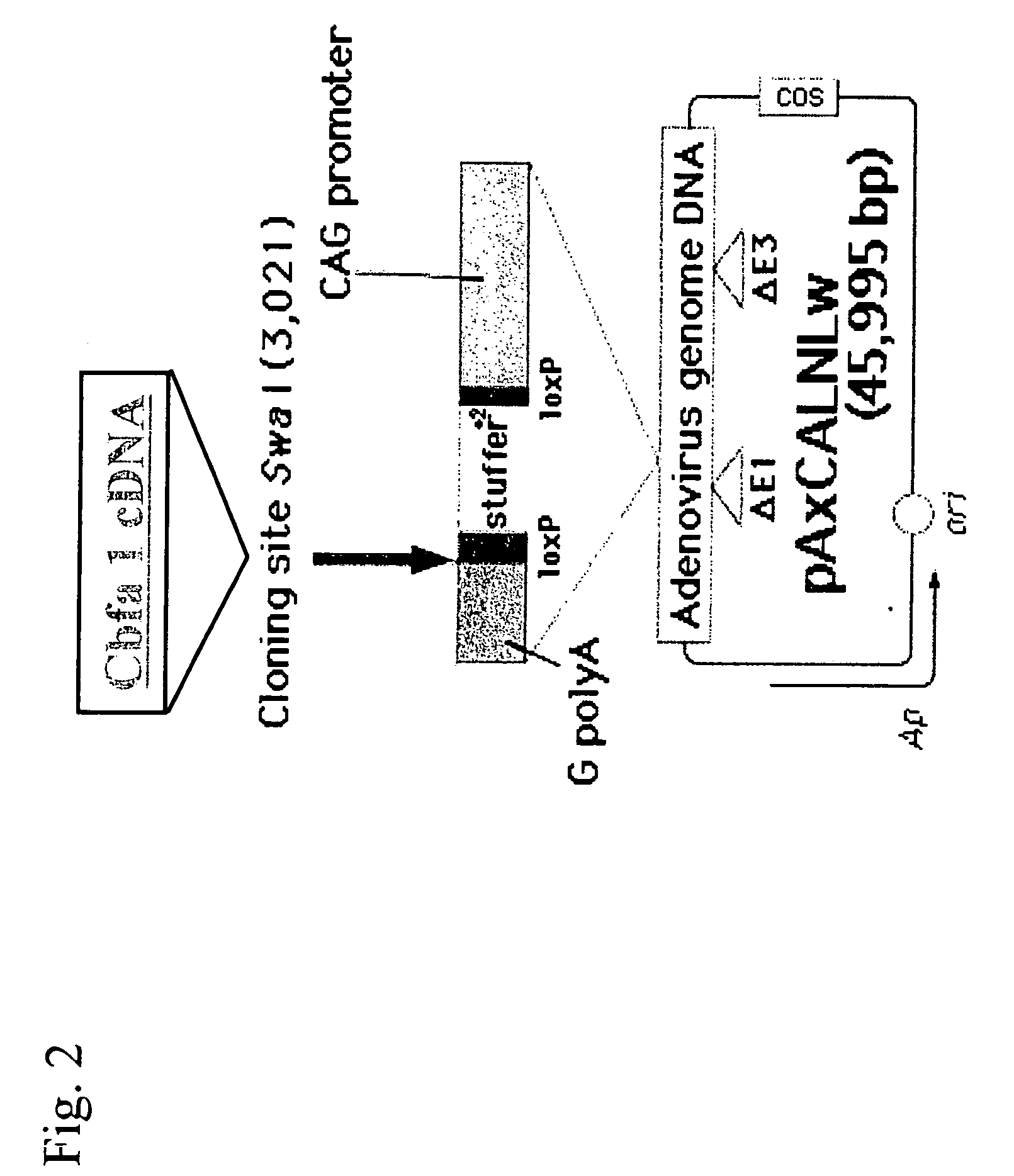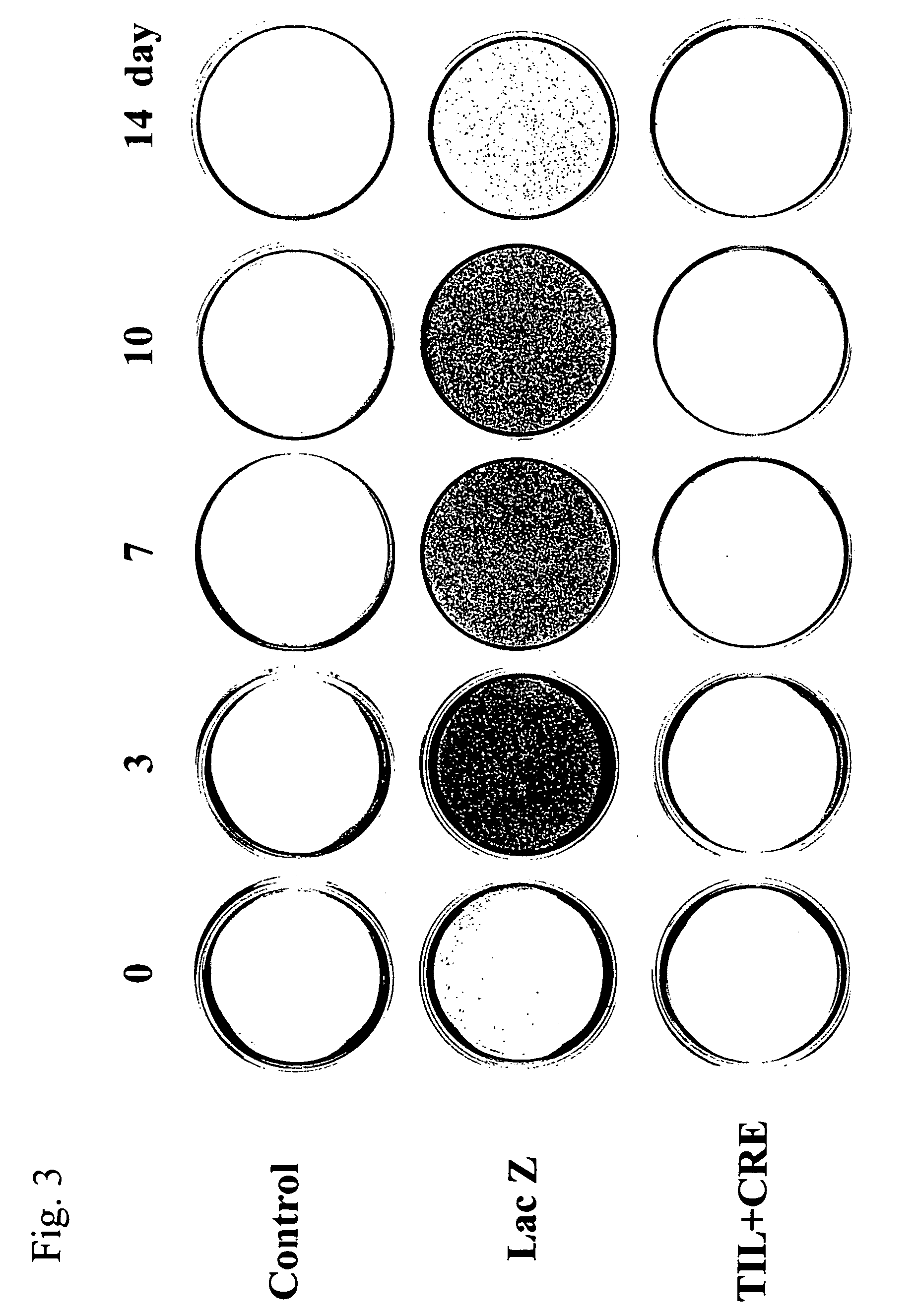Method of regenerating bone/chondral tissues by transferring transcriptional factor gene
a transcription factor and gene technology, applied in the direction of genetically modified cells, skeletal/connective tissue cells, prostheses, etc., can solve the problems of special attempts to regenerate tissue utilizing the functions of transcription factors, but not yet reported, and achieve high bone formation ability, high compatibility, and restore bone defects
- Summary
- Abstract
- Description
- Claims
- Application Information
AI Technical Summary
Benefits of technology
Problems solved by technology
Method used
Image
Examples
example 1
Bone Tissue Regeneration by Transfecting Cbfa1 Genes into Rat Osteoblasts using an Adenoviral Vector
[0067] 1. Experimental Method
[0068] 1) Preparation of Adenoviral Vector
[0069] (i) Preparation of cDNA of Cbfa1
[0070] Two types of cDNAs of Cbfa1, i.e., type I: pebp2αA / Cbfa1 (SEQ ID NO: 1) and type II / III: til-1 / Cbfa1 (SEQ ID NO: 2), were prepared from two types of plasmids*1 (pSG5 / IT (mPEBP2aA) and pSG5 / KS (mtil-1)) provided by Sumitomo Pharmaceuticals Co., Ltd., ORF of mPEBP2aA was cleaved therefrom using a BamHI restriction enzyme, and ORF of mtil-1 was cleaved therefrom using a BglII restriction enzyme (FIG. 1).
*1: Two types of Cbfa1 exist, i.e., type I (pebp2αA / Cbfa1) expressed specifically in T-cells and type II / III (til-1 / Cbfa1) expressed specifically in osteoblasts. Type II / III is longer than type I.
[0071] (ii) Preparation of recombinant Adenovirus
[0072] Two types of cDNAs of Cbfa1 were inserted into the SwaI site of the cosmid vector pAxCALNLw using the commercially av...
example 2
Experimentation for Transplanting the Cbfa1 Gene-Transfected Osteoblasts into a Rat's Back Subcutaneously
[0107] 1. Experimental Method
[0108] 1) Transplantation into rat's Back Subcutaneously
[0109] The Cbfa1 gene-transfected rat osteoblasts were cultured using a commercially available β-TCP (tricalcium phosphate) porous block (average pore size: 200 μm in diameter, 5 mm×5 mm×5 mm, Olympus) as a scaffold in the following manner, and the composite was transplanted subcutaneously to a rat's back. The confluent rat osteoblasts were treated with trypsin and the cell suspension was then soaked into the β-TCP block under low pressure (100 mHg) at a cell density of 1,000,000 / ml. After the cells were cultured for an additional 2 weeks, they were infected with the Cbfa1 (til-1)-recombinant adenoviral vector prepared in Example 1 at an moi of 500, and the infected cells were transplanted subcutaneously to a rat's back on the next day. As the control, blocks comprising cells infected with the...
example 3
Experimentation for Transplanting Cbfa1 Gene-Transfected Osteoblasts to Rat's Back and Bone Defects
[0123] 1. Experimental Method
[0124] 1) Transplantation into Rat's back and into Femur
[0125] The rat osteoblasts were infected with the Cbfa1 (til-1)-recombinant adenovirus vector at a moi of 500. Twenty four hours later, the cells were trypsinized and the cell suspension was soaked into the commercially available β-TCP block (average pore size: 200 μm in diameter, 5 mm×5 mm×5 mm (for subcutaneous transplantation), 2 mm×2 mm×2 mm (for bone defects transplantation), Olympus) at a cell density of 2,000,000 cells / ml. Next day, the blocks were transplanted to a rat's back and into the bone defects. Transplantation into the bone defects was conducted by producing holes (diameter: 2 mm, depth: 3 to 4 mm) in the frontal ends of left and right femora and by embedding the blocks in the holes (bone defects). As the control, blocks containing uninfected cells were similarly transplanted.
[0126]...
PUM
| Property | Measurement | Unit |
|---|---|---|
| porosity | aaaaa | aaaaa |
| diameter | aaaaa | aaaaa |
| pH | aaaaa | aaaaa |
Abstract
Description
Claims
Application Information
 Login to View More
Login to View More - R&D
- Intellectual Property
- Life Sciences
- Materials
- Tech Scout
- Unparalleled Data Quality
- Higher Quality Content
- 60% Fewer Hallucinations
Browse by: Latest US Patents, China's latest patents, Technical Efficacy Thesaurus, Application Domain, Technology Topic, Popular Technical Reports.
© 2025 PatSnap. All rights reserved.Legal|Privacy policy|Modern Slavery Act Transparency Statement|Sitemap|About US| Contact US: help@patsnap.com



